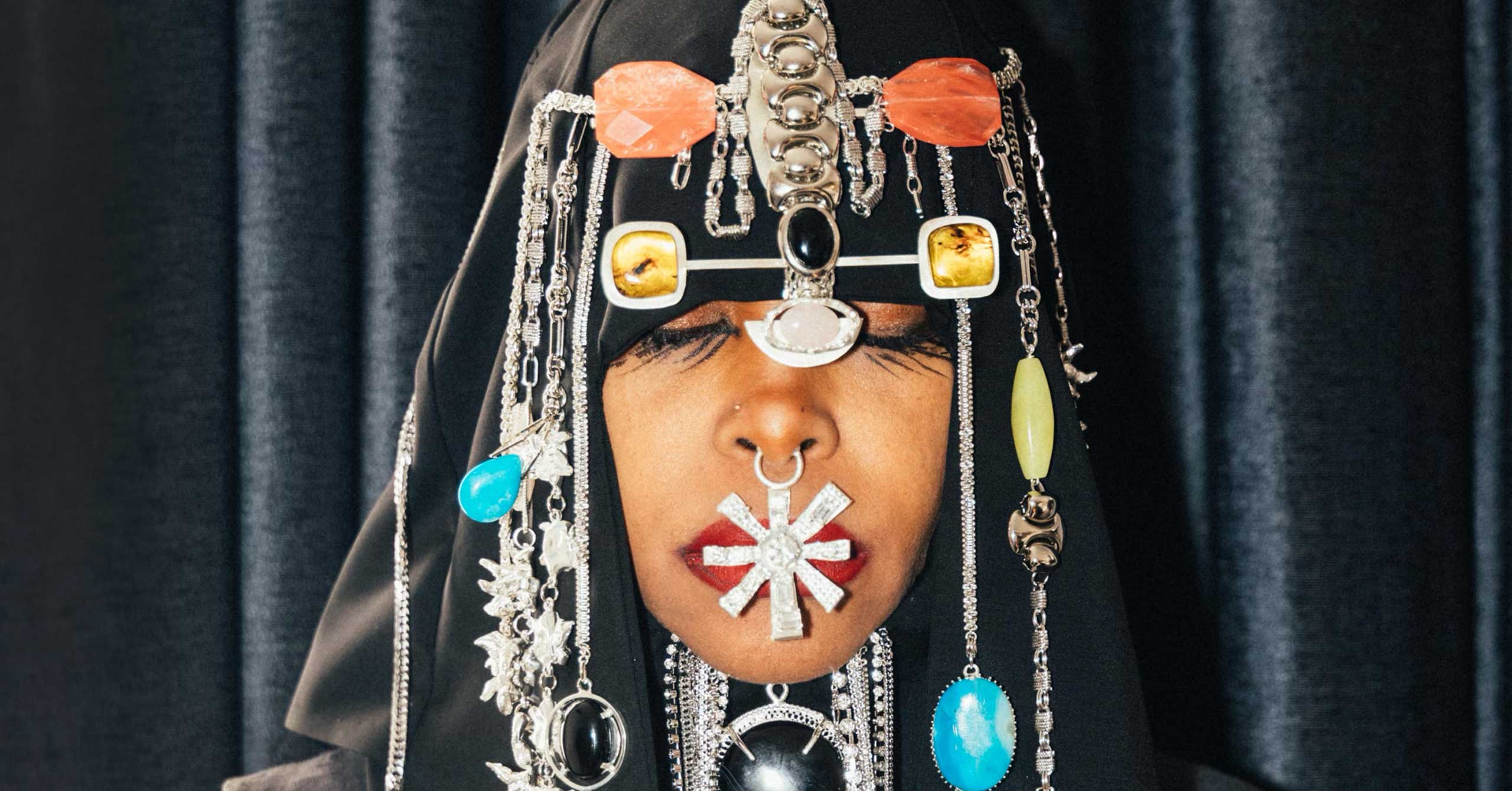
Filipino-American accessories designer Chris Habana reflects on the making of his custom creation for Erykah Badu, an AI art-inspired headpiece that she paired with Thom Browne for the CFDA Fashion Awards. When music icon Erykah Badu graced the Council of Fashion Designers of America (CFDA) Fashion Awards , her entire look immediately turned heads. Wearing a textured cashmere and mohair ensemble by Thom Browne and a striking headpiece and septum ring by Filipino-American accessories designer Chris Habana , Badu graciously accepted this year’s prestigious Fashion Icon award.
Her jewelry, one she collaborated on closely with Habana, is a stunning fusion of art, technology, and cultural inspiration. The collaboration began with a bold concept: Badu brought Habana an AI-generated rendering by digital artist Parallel , which she discovered online, and challenged him to translate its surreal, futuristic design into a tangible masterpiece. “It was intriguing and meta to reverse the process,” Habana says.
“We took inspiration from an image produced by a collage of other ideas and re-engineered it into a 3D object.” To bring Badu’s vision to life, Habana’s team experimented with materials to capture the digital aesthetic while ensuring that the pieces embodied her personal energy and presence. “Erykah’s openness to experimentation really allowed us to take risks, blending raw sterling silver with gemstones, to create a piece that felt ancient and futuristic, and felt ‘collected’ by a nomadic global traveler,” Habana explains.
One surprising technique involved incorporating tiny reflective elements into the organic silver casts. Lab-grown stones were strategically placed to catch the light, creating a sense of movement and energy. “It was a true collaboration that pushed us creatively in exciting ways,” Habana adds.
At a time when there are mixed reactions to technology, particularly artificial intelligence (AI) in the creative industry, Habana embraces its potential. Rather than resisting the rise of AI, he sees it as a new frontier for creation. “The fusion of digital and physical has opened up a new realm of creativity for us.
It almost gives us a guideline to work with, but also the freedom to interpret things that work in the physical world,” Habana says. “ I can see AI already affecting design! We get more and more stylists who send us AI renderings to see how we can interpret them so good or bad, AI will definitely influence design in the future.” For Badu’s look, Habana provided what AI couldn’t: a human and culturally sensitive lens.
“One of the biggest challenges was balancing cultural resonance with a modern aesthetic,” he notes. “We recognized that the AI image looked like it referenced Berber and Rabari culture but we didn’t want to appropriate those cultures so blatantly but instead, pay homage and respect to them.” The CHRISHABANA team hand-carved wax molds to create organic, root-and tree-like elements that were natural yet abstract.
“The goal was to achieve a found look without pinpointing any one culture,” Habana explains. Materials and techniques were chosen carefully to ensure each piece held both symbolic meaning and the desired aesthetic. As a Filipino-American designer, subtle distinctions and sensitivities come intuitively for Habana.
“My heritage is a huge part of my creative process, but a lot more nuanced than what you might expect,” he shares. A childhood in the Philippines, followed by a life-changing move to New York in 1989, exposed him to contrasting aesthetics and traditions. “Filipino culture is such an amalgamation of indigenous, Spanish, Japanese, and American influences.
By nature, we are a layered people.” This duality is evident in his designs, especially in the pieces created for Badu. Traditional shapes, textures, and cultural symbols merge with modern, urban, and subversive elements.
“It’s about honoring my roots while creating something that speaks to the future. This, at the core, is how I approach design at CHRISHABANA,” he says. Habana started CHRISHABANA in 2008, his jewelry adorning some of the most notable names in fashion and entertainment to date.
From Madonna to Rihanna to the runway for Christian Cowan and Theophilo, his designs offer an edgy, subversive touch to each look. Looking ahead, Habana feels a sense of excitement and anticipation about the possibilities technology and innovation bring to the creative landscape. “Tech and global influences are constantly shifting what’s possible.
I’m excited about sustainable materials mixing with futuristic techniques, like bio-fabricated materials and 3D printing, which allow us to create intricate designs with a lower environmental impact,” he shares. Technology is also helping CHRISHABANA experiment with forms that wouldn’t be possible by hand, expanding the boundaries of traditional craftsmanship. Embracing these innovations to create visually arresting pieces that are mindful of their environmental impact is how Habana wants to take his brand further.
“For me, it’s really about finding a perfect balance of celebrating the past while embracing the future, and how we can express the two in the most striking, culture-forward moving ways.”.














